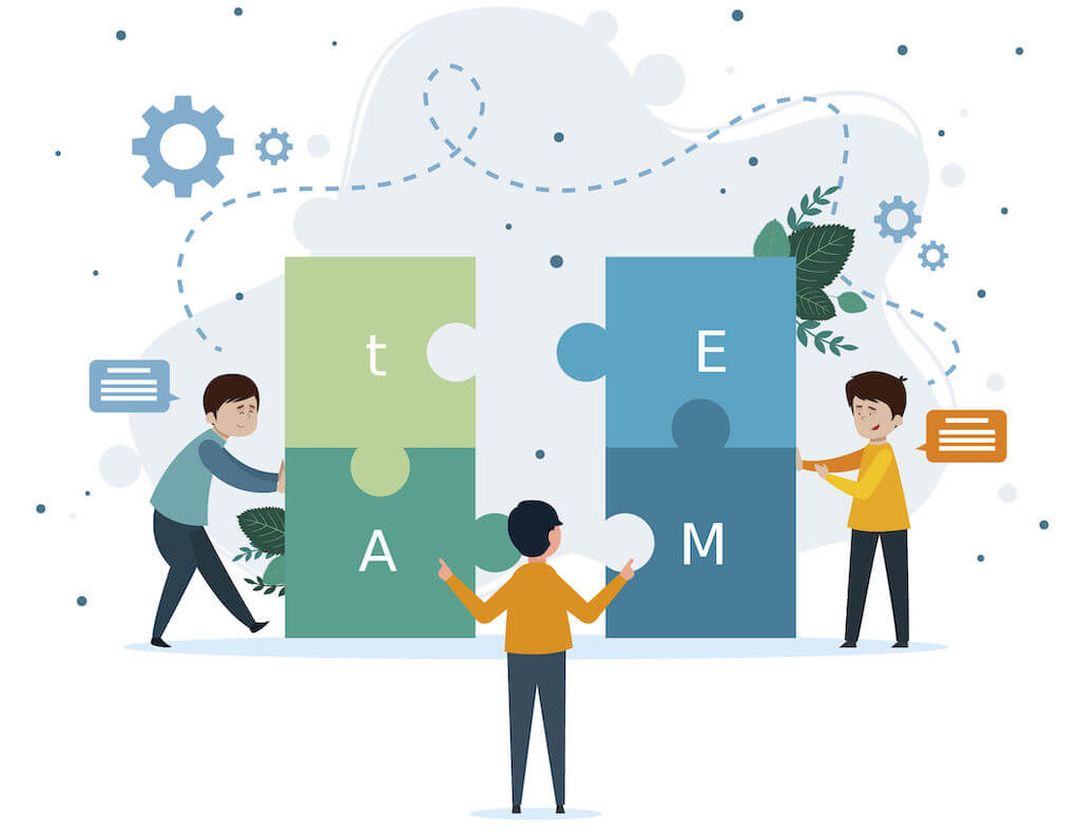It’s no secret that having the right people around is one of the key ingredients for the project's success. SMEs and startups often face difficulties with adding resources to an existing team, especially with specific skillsets. In traditional outsourcing, there is little reliance on the in-house team. Here’s when the Extended Team Model comes to the rescue.
Table of Contents
What Is An Extended Team Model (ETM)?
An Extended Team (often also called staff augmentation) is a type of product development model. The core part of the development team is located in-house while being extended by a team of remote developers. Both the teams collaborate with each other, complementing the lacking skills or experience.
The extending team can be both nearshored (to a bordering country) or offshored (to a totally different continent). There’s no right or wrong, the most important part is that the team you decide to work with is an extension of your company.

But how is the Extended Team Model Different from Outsourcing?
There is one crucial difference between outsourcing and working in an extended team model - location. To outsource means the entire development process is transferred to an external team, often located in a different country.
Outsourcing also does not necessarily mean a long-term collaboration, whereas is is the main aim of the Extended Team Model.
Key features and benefits of ETM
Although the overall rules of collaboration between ETM and traditional outsourcing are quite similar, there are some specific features that differentiate them, such as:
Complement not substitute
The remote team is meant to complement the in-house team and not substitute it. Its main goal is to fill the skill or experience gaps. It becomes a part of the company, sharing its visions and needs while leveraging the existing resources.
Tasks for everybody
Task and responsibilities are evenly distributed among the members of both the internal and external team. However, project management remains within the core in-house team.
Fully-focused
Extended developer teams are completely invested in your project as they’re not juggling a few different projects. After the project is completed, external teams are not broken up. They are aiming for a long-term collaboration.
You’re in control
The project management team controls the key points of collaboration and takes part in the decision-making process. Working with an external team allows maintaining integration with complex internal processes
International talent pool
Extended Team Model introduces costs savings and versatility. You get access to the international talent pool and a variety of hourly rates.
Mutual benefits
In-house teams often benefit from working with an extended team. It gives them the ability to learn from each other, share tips and work on solving problems together. Introducing ETM ensures the in-house team stays lean and efficient. Only essential staff is applied, leaving no room for cutbacks and downtime
Flexibility and time savings
This model of collaboration introduces scalability and flexibility without the recruitment hassle. Going with an ETM saves time and efforts that would normally be spent during the recruiting and training process.
You can build a team faster and skip worrying about finding a working space for the new team members. An External Team Model is easier to introduce and adapt to the company than outsourcing
When to Use the Extended Team Model?
Extended Team Model is a great fit when you’re lacking skilled developers who could support your team. The ETM will also be for you if you want to start a side project and don’t want your core team getting distracted from the main project. It’s best for projects that are meant to be gradually expanded.
You should also choose the Extended Team Model when you want to have full control over the processes and want to get involved in a long-lasting collaboration.
However, if you lack an IT team, need to develop a one-time project or want to delegate the entire development process to an external company, going with the old-school outsourcing would be better.
Summary
The Extended Team Model is a collaboration based on mutual trust, shared values and transparency. It’s working towards a common goal while establishing emotional connections and remaining flexible.
It’s a great solution when your IT team lacks experience or skills and you don’t want to go through the recruitment process or couldn’t find suitable engineers.
If you’re in the middle of looking for an amazing external team, look no more - Selleo is excited to work with you in any model you choose. Check out one of our teams.








